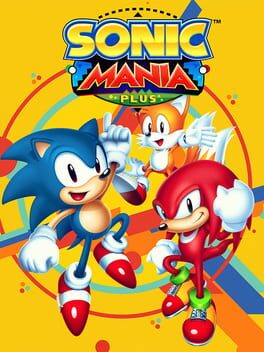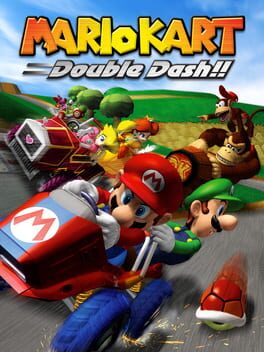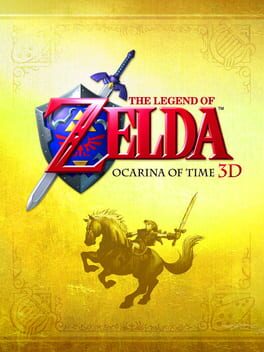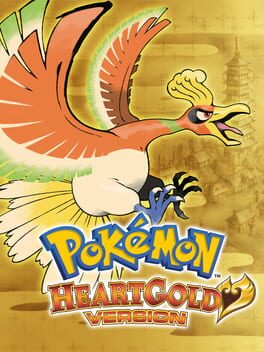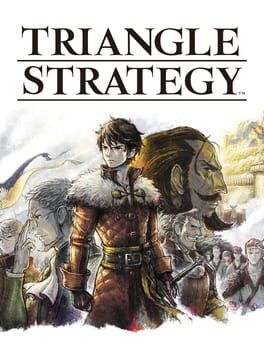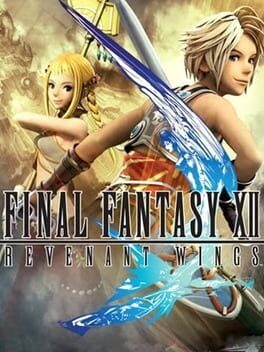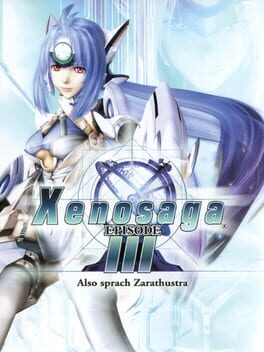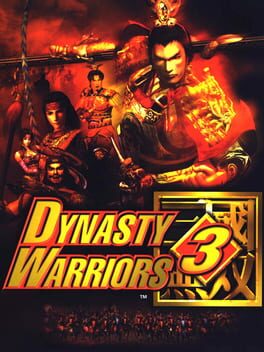silverumbro
2018
More studios should be willing to hand their un- or mis-used properties over to people with roots in the fan modding community. Especially if it means we get more stuff like this. Sonic Mania is such a great take on classic 2D Sonic. Just the right amount of homage to previous games, just the right amount of remixing with some original ideas.
2021
I want to like this game, but I am, as of right now, going to shelve it for now.
Where to start….i just do not like the Dark Souls/From Software design influence that has come into vogue. I just do not enjoy that level of unforgiveness in games. And this game has it in a few different ways. First and most obvious, the EMMIs. The feel of traversal in Metroid Dread was is really good, but forcing me to deal with these one-touch-and-your-dead enemies just grates, especially as the game goes on and the late game EMMIs have more enhanced abilities. I like exploring the spaces and learning how to navigate them, but the EMMIs change that dynamic and make it more tense. Dreadful, if you will. Which is definitely the intention here, but I just tired of it.
Second, even on Rookie mode, it feels like bosses hit for a ton, making the learning and progression through boss fights more frustrating for me than fun. And Rookie mode was specifically added to make the game easier. It just doesn’t go far enough for me.
Third, I know sequence breaking is a thing you can do here, but unless you know what you’re doing, I feel pretty lead around. I think the intent of the design was to loop you around areas, funneling you to the next thing, while showing you where to progress once you got the next milestone and its associated power. Metroid games, especially my favorite Metroid Fusion, do that in some form, but I don’t know about Dread. I think my nerves get frayed dealing with the first two points that it’s hard to enjoy the in-between parts, which do showcase the excellent controls.
Where to start….i just do not like the Dark Souls/From Software design influence that has come into vogue. I just do not enjoy that level of unforgiveness in games. And this game has it in a few different ways. First and most obvious, the EMMIs. The feel of traversal in Metroid Dread was is really good, but forcing me to deal with these one-touch-and-your-dead enemies just grates, especially as the game goes on and the late game EMMIs have more enhanced abilities. I like exploring the spaces and learning how to navigate them, but the EMMIs change that dynamic and make it more tense. Dreadful, if you will. Which is definitely the intention here, but I just tired of it.
Second, even on Rookie mode, it feels like bosses hit for a ton, making the learning and progression through boss fights more frustrating for me than fun. And Rookie mode was specifically added to make the game easier. It just doesn’t go far enough for me.
Third, I know sequence breaking is a thing you can do here, but unless you know what you’re doing, I feel pretty lead around. I think the intent of the design was to loop you around areas, funneling you to the next thing, while showing you where to progress once you got the next milestone and its associated power. Metroid games, especially my favorite Metroid Fusion, do that in some form, but I don’t know about Dread. I think my nerves get frayed dealing with the first two points that it’s hard to enjoy the in-between parts, which do showcase the excellent controls.
It's a special kind of brilliance that Nintendo has. They took a game that was already beloved as both evolution and revolution, Breath of the Wild, and upped the ante. And they did with the same casual abandon that makes sense a Mario game. You know all those mechanics from Breath of the Wild (not weapon durability, that's still here, and I still like it. Stay mad.) they just ditched them. Just like that. Gone.
And what did they replace them with? Oh, just a physics engine that lets you build simple machines or oversized death contraptions that you pilot. Oh, and the ability to reverse time for an object so you can exploit puzzles with repetitive motion or simple lob a rock some enemy tossed at you like an angry, but otherwise untroubled god. Oh, and your weapons, shields, and arrows can now be fused to almost EVERY object in your inventory. Oh, and you know how in Breath of the Wild you climbed everything? Well in this game you don't sully yourself with climbing, you teleport from the bottom of almost any obstacle to the top of that obstacle. It's like a cheat code.
Oh, and while they were at it they went and added two tiers (get it - Tiers of the Kingdom) to the already impressively large map. Want to cruise the sky above the map? Go for it. Want to plumb some depths? There are so many depths, get in there.
It's just remarkable what Nintendo achieved here. I somehow have the tools to be more engaged, more creative, and more free. It is as if they discovered a 2001: A Space Odyssey monolith that granted them the ability make go from climbing trees to sailing the skies in our very own airplanes, glued together with whatever our imagination told us the game would let us do. And it all runs on the Nintendo Switch. Let that sink in for a bit.
I felt while playing this that it was a game that only exists because Nintendo seems to steadfastly only want to make games that have new, interesting things for the player to do. They keep succeeding in that, and here, they reached heights that I only thought couldn't be reached. That is until I look at what was around me and in my inventory, and got playing.
And what did they replace them with? Oh, just a physics engine that lets you build simple machines or oversized death contraptions that you pilot. Oh, and the ability to reverse time for an object so you can exploit puzzles with repetitive motion or simple lob a rock some enemy tossed at you like an angry, but otherwise untroubled god. Oh, and your weapons, shields, and arrows can now be fused to almost EVERY object in your inventory. Oh, and you know how in Breath of the Wild you climbed everything? Well in this game you don't sully yourself with climbing, you teleport from the bottom of almost any obstacle to the top of that obstacle. It's like a cheat code.
Oh, and while they were at it they went and added two tiers (get it - Tiers of the Kingdom) to the already impressively large map. Want to cruise the sky above the map? Go for it. Want to plumb some depths? There are so many depths, get in there.
It's just remarkable what Nintendo achieved here. I somehow have the tools to be more engaged, more creative, and more free. It is as if they discovered a 2001: A Space Odyssey monolith that granted them the ability make go from climbing trees to sailing the skies in our very own airplanes, glued together with whatever our imagination told us the game would let us do. And it all runs on the Nintendo Switch. Let that sink in for a bit.
I felt while playing this that it was a game that only exists because Nintendo seems to steadfastly only want to make games that have new, interesting things for the player to do. They keep succeeding in that, and here, they reached heights that I only thought couldn't be reached. That is until I look at what was around me and in my inventory, and got playing.
1998
Where to begin with Xenogears? How does someone organize their thoughts on a game that drops an anime cutscene on you, raising a whole bunch of questions (What does "You shall be as gods" mean? Who is that purple haired lady?) that it doesn't answer for dozens of hours? And just who is Fei, the protagonist who is also the author of the stereotypical destruction of the starting village?
Kind of like Xenogears, I won't be answering those questions here for spoiler reasons, though the game does get around to satisfying those questions. What I will say is that this is an incredibly ambitious game and story, and it is amazing to reflect on the fact that this was attempted at all, let alone in 1998.
If you enjoy any of Tetsuya Takahashi's work (and that of his wife, Soraya Saga, who co-wrote this and worked on some of the Xenosaga games with him) this is worth checking out. I can't take credit for this idea, but in listening to a book club podcast about Xenogears, someone quoted a filmmaker who said that every director is constantly trying to remake one movie. I feel this to be true with Takahashi, as many of the ideas and themes found here in Xenogears are present in later games he has worked on, all under a "Xeno-" brand in Xenosaga and Xenoblade Chronicles. Jungian and Freudian Psychology, Gnosticism, Jewish Mysticism, Dogmatic religions. All are themes here and elsewhere in his work.
If you give this game a try, and I encourage anyone interested to absolutely do so, like I said above is it highly ambitious, while also being flawed in many ways. Bear in mind that this was also Takahashi's first game, and that the translation was apparently a nightmare to complete.
Kind of like Xenogears, I won't be answering those questions here for spoiler reasons, though the game does get around to satisfying those questions. What I will say is that this is an incredibly ambitious game and story, and it is amazing to reflect on the fact that this was attempted at all, let alone in 1998.
If you enjoy any of Tetsuya Takahashi's work (and that of his wife, Soraya Saga, who co-wrote this and worked on some of the Xenosaga games with him) this is worth checking out. I can't take credit for this idea, but in listening to a book club podcast about Xenogears, someone quoted a filmmaker who said that every director is constantly trying to remake one movie. I feel this to be true with Takahashi, as many of the ideas and themes found here in Xenogears are present in later games he has worked on, all under a "Xeno-" brand in Xenosaga and Xenoblade Chronicles. Jungian and Freudian Psychology, Gnosticism, Jewish Mysticism, Dogmatic religions. All are themes here and elsewhere in his work.
If you give this game a try, and I encourage anyone interested to absolutely do so, like I said above is it highly ambitious, while also being flawed in many ways. Bear in mind that this was also Takahashi's first game, and that the translation was apparently a nightmare to complete.
I know this isn’t widely considered a favorite Mario Kart, but I love it for two reasons.
Number 1: I like the two character mechanic and the strategic choices it allows. The game will give characters a slight preference to the items they get from item boxes based on who the are. So if you want your weapon of choice to be fireball, choose Mario. If you want bananas, choose a Kong. I personally favored Toad, for boost mushrooms, and Red Koopa, for red shells. And the two characters let you play 2v2 teams with four players, so that one person was driving on a team, while the other one threw their character’s held item, then you had to switch to throw the other character’s item. This was, for me, a fun wrinkle to the gameplay.
Number 2: The item table does not include coins. In more recent entries in the Mario Kart series you can be given coins when you hit an item block. The give you a small acceleration boost for having them. I loved the Double Dash how even once you largely got bananas in first place you could still use them to defend yourself, whether by clever placement on the track or trying to get red shells to hit them instead of you. When I get a banana, it’s a challenge to use it to help yourself and not hurt yourself by running into one you planted on the last lap. When my character reacts when someone hits one that I planted, I feel clever, doubly sonic it was my friend sitting next to me. When I get a coin though? I hit the button, it flashes over my character’s head, and I feel nothing.
That’s it. Great game.
Number 1: I like the two character mechanic and the strategic choices it allows. The game will give characters a slight preference to the items they get from item boxes based on who the are. So if you want your weapon of choice to be fireball, choose Mario. If you want bananas, choose a Kong. I personally favored Toad, for boost mushrooms, and Red Koopa, for red shells. And the two characters let you play 2v2 teams with four players, so that one person was driving on a team, while the other one threw their character’s held item, then you had to switch to throw the other character’s item. This was, for me, a fun wrinkle to the gameplay.
Number 2: The item table does not include coins. In more recent entries in the Mario Kart series you can be given coins when you hit an item block. The give you a small acceleration boost for having them. I loved the Double Dash how even once you largely got bananas in first place you could still use them to defend yourself, whether by clever placement on the track or trying to get red shells to hit them instead of you. When I get a banana, it’s a challenge to use it to help yourself and not hurt yourself by running into one you planted on the last lap. When my character reacts when someone hits one that I planted, I feel clever, doubly sonic it was my friend sitting next to me. When I get a coin though? I hit the button, it flashes over my character’s head, and I feel nothing.
That’s it. Great game.
Every time I sit down for a Zelda game I am amazed to see the same design principles iterated in a similar, but still entertainingly different way. Ocarina of Time is no exception, and manages to do it while simultaneously making the jump to 3D.
This version in particular, on the 3DS, is just a joy. The graphics are updates to smooth the character models and textures from the N64 version, but not in a way that feels horrifyingly unfamiliar, like that awful version of Final Fantasy VI that got rid of the pixel graphics for smoothed over models. The Master Sword here looks like the one we expect, just like we remember it, even if it is a little different.
Beyond the graphics, little adjustments with the addition of the touch screen controls (equipping boots is no longer an exercise in repetitious menuing) make this a great way to experience this classics. And the Water Temple has been changed subtly to better mark that dungeons mechanic, making a tough dungeon more understandable.
Do yourself a favor and pick this up on the 3DS eShop before it closes.
This version in particular, on the 3DS, is just a joy. The graphics are updates to smooth the character models and textures from the N64 version, but not in a way that feels horrifyingly unfamiliar, like that awful version of Final Fantasy VI that got rid of the pixel graphics for smoothed over models. The Master Sword here looks like the one we expect, just like we remember it, even if it is a little different.
Beyond the graphics, little adjustments with the addition of the touch screen controls (equipping boots is no longer an exercise in repetitious menuing) make this a great way to experience this classics. And the Water Temple has been changed subtly to better mark that dungeons mechanic, making a tough dungeon more understandable.
Do yourself a favor and pick this up on the 3DS eShop before it closes.
An excellent remake that I loved the first time and this time, my third time through it while playing in parallel with my son. I hope that kid realizes how lucky he is to have a video game aficionado for a dad.
I beat the Elite Four twice, but still need to beat Red. Might wait until my son catches up to trade teams and level up our teams on the other version for that sweet, sweet traded Pokémon exp boost.
I beat the Elite Four twice, but still need to beat Red. Might wait until my son catches up to trade teams and level up our teams on the other version for that sweet, sweet traded Pokémon exp boost.
2022
As a tactical RPG fan, this game seemed like a great concept with a strong chance to be a game I thought was great. In the end though, it’s just……merely good. I think the gist of the Polygon review seems right to me, that this game ultimately doesn’t trust the player enough to enjoy the game on any level other than the one it can present, so it’s constantly presenting things to you. It’s interesting and strange that this approach is paired with a choice system, but the length of time it takes to watch scenes, make choices, and get to the next battle just breaks apart the flow of what should be the focus - the tactical battles, my choices regarding character progression, deployment, and usage. I love when games let me learn their systems, then unleash my proficiency of those systems on it. Triangle Strategy’s slow progression to match the frequent long story scenes, that I think are actually undercut by the choice mechanic and branching paths. Final Fantasy Tactics, the seminal tactical RPG, is, I think, so good in part because it has something to say, a story to tell, where Triangle Strategy has a flow chart to progress you through. Maybe I’ll come back to this, but I’ve had to put it down and move on for now.
2022
Just finished this in my journey to try and play DS and 3DS games that I want to revisit. Originally, I got this when it came out, but bounced off of it due to its difficulty for younger me. I picked it up again and secured a copy of the Brady Games strategy guide. It’s fun and an interesting exploration of the Ivalice of FF XII. The mechanics are solid, but my gripe is that the key to success is in the strategy, not necessarily in the tactics. It felt to me like making the correct choices in preparing for a level was more important than my tactical choices once I was playing that level. Still, impressive that something in the level of the DS can support this game, which also might be one of the best looking games in the DS too.
After revisiting Episode I, and skipping the disaster that is Episode II, I replayed Episode III to see how it holds up and experience the ambition of the story. And my conclusion is that it’s fine. Just fine. The story, while grandiose and in-depth, is rushed in some respects so that for me it’s kind of a mess. Emotionally it get me there with some of the characters, but others just do not earn their resolutions. The battle system returns mostly to Episode I’s, with the break mechanic returning from Episode II in a form that isn’t awful, but still feels kinda slow and plodding in a way that games released today do not, in my opinion. Nothing is unplayable, but it tends to drag when it shouldn’t. Maybe it’s just that game part doesn’t live up to the ambition. I do want to say that I think these games, at least Episodes I and III, were still worth playing. Ultimately, the story and the journey of the characters is engrossing and thought provoking, trying to achieve something in and with the medium of video games.
I recently replayed this (and Episode III) to see how they hold up. I loved this game when it came out, with its complex science fiction story and turn based combat, it was right up my alley at the time. Now, I can see and feel its flaws more. It’s definitely a game where the developers were trying to figure out how to tell their story within the confines of the technology of the PS2. The combat system was fine then, and has an interesting system of earning and spending points to improve characters, but today it’s a little slow and clunky in ways that it wouldn’t be in a game made today. Still though, few games try and tell stories like this one, so clearly inspired by the previous game, Xenogears, and also by philosophy, religion, and futurism. That still had me enthralled.
2001
Is this the best Dynasty Warriors from a mechanical and technological standpoint? No, it is not. But I don’t think I’ll ever lose my love for this game and the many hours my friend and I spent playing it in my basement for two or three summers. I do think it’s the funniest Dynasty Warriors game I have played. The animations and voice acting are so early PS2 that they are bad in a good way.
